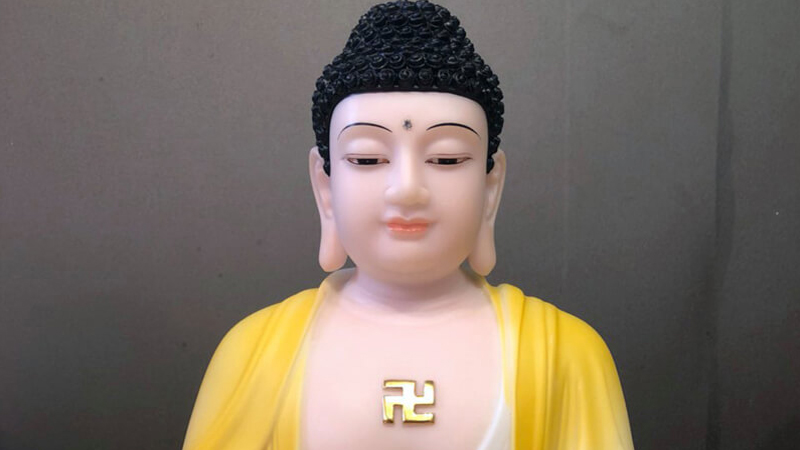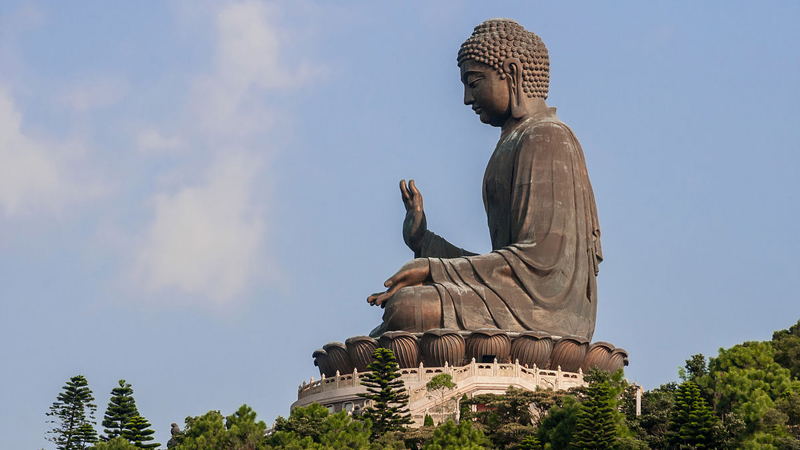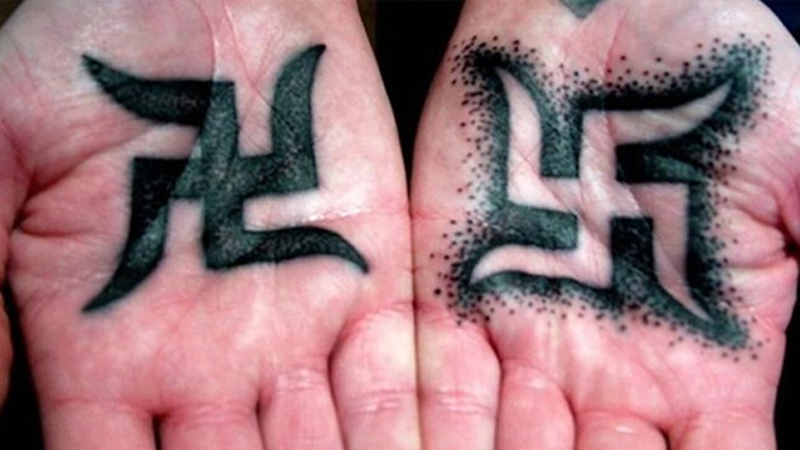The Buddhist swastika is one of the most recognizable symbols in the world today and is considered one of the 32 best characteristics of the Buddha. The swastika also appears on the Buddha’s chest. So, what is the meaning of the swastika in feng shui and what are the things to know about this special symbol? Please read the article below for more information.
1 What is the Swastika?
According to the Wiki dictionary, the swastika (卍) is a type of cross with four right angles and four arms bent at 90 degrees in a clockwise direction. The term “swastika” is derived from the Sanskrit word meaning “well-being, peace, success, and prosperity.”
The swastika is one of the 32 best characteristics of the Buddha, located right in front of His chest. Other scriptures also indicate that this is the 80th characteristic of Lord Buddha and represents His infinite merit. It manifests on the Buddha’s chest, symbolizing complete enlightenment. This position symbolizes the Middle Way, not stuck on either side, transcending duality.
The swastika symbolizes good luck and represents the universe and the solar system, which is the source of infinite and eternal life. The image of the swastika is also present in temples and religious ceremonies.
 Swastika on the Buddha’s chest
Swastika on the Buddha’s chest
However, the swastika is also widely used as a symbol in Hinduism and Jainism. In Jainism, the swastika drawn on the hand reminds us of the four places of rebirth in the cycle of reincarnation: heaven, human world, flora and fauna, and hell. For the Hindus, this symbol placed on the first pages of books or during rituals represents heaven, the human world, flora and fauna, and hell, and is believed to offer protection from evil spirits.
There are two ways to write the swastika:
Write it as (卐) in a counterclockwise direction. This is also the natural direction of the Earth’s rotation around the Sun and its own axis. It can be translated as “auspicious sea cloud form,” which is considered as circumambulating the Buddha to show respect and admiration.
Write it as (卍) in a clockwise direction (the direction of generation in the Five Elements theory). This form is believed to bring out and offer good things, happiness, and blessings. It is called “auspicious,” “ten thousand characters,” or “virtue characters.” The auspicious power of this symbol is as deep as the ocean and as vast as the clouds.
2 Meaning of the Buddhist Swastika in Feng Shui
The Buddhist swastika is revered by many followers of the Buddhist faith in various countries, who consider it a sacred symbol. In Vietnam, Buddhism is the predominant religion and is worshiped nationwide. Followers may use the swastika as an alternative to a Buddha statue to show their reverence. The swastika is also used as a decorative element in Buddhist architecture.
 Meaning of the Swastika in Buddhism
Meaning of the Swastika in Buddhism
The swastika is also used in Vietnamese decorative arts, such as wood and metal carvings, furniture, altars, and feng shui items.
3 Where is the Swastika Symbol Commonly Found?
The swastika can be seen on the chest of Buddha statues, on book covers, and in Buddhist scriptures. It is also found on the hair, soles of the feet, or palms of the hands in images of the Buddha.
Images of the swastika can be found on large and small Buddha statues across Asia. One notable example is the giant bronze statue of Buddha on Lantau Island in Hong Kong, standing at over 35 meters tall and completed in 1993.
 Buddha Statue on Lantau Island, Hong Kong
Buddha Statue on Lantau Island, Hong Kong
The swastika was also featured on postage stamps during World War II, evoking the bloody and brutal battles between Hitler and the Jews. As a symbol of good luck and well-being, it, unfortunately, also suffered negative associations due to its misuse during that time.
4 Swastika Tattoo
 Swastika Tattoo
Swastika Tattoo
The swastika – a single character that symbolizes numerous auspicious meanings and brings happiness and good fortune. You can get a swastika tattoo or display it in your home to attract luck and wish for peace and harmony.
2023 Lunar New Year Gift Ideas for Older Family and Friends
As 2021 approaches, families worldwide are gathering to celebrate the special bond between grandparents and their grandchildren. To show their love and admiration, these thoughtfully chosen gifts will bring a smile to the face of the elderly. Here, we have compiled a list of the 13 most meaningful Tet presents that can bring joy to our beloved grandparents.



































